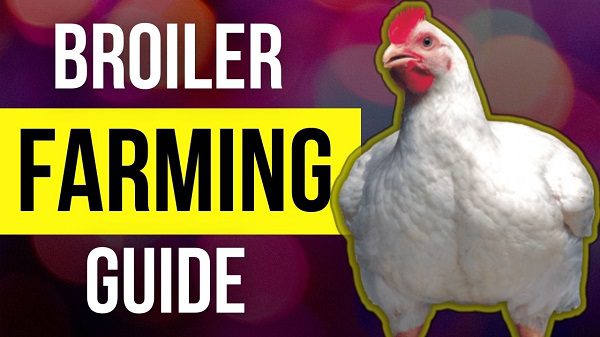
Feeding broiler chickens at home: features of broiler care and choosing the right diet
Broilers do not belong to special breeds of chickens. These are hybrids that almost do not produce eggs, but grow by leaps and bounds, although a lot of feed is not required. Broiler meat is considered a dietary product. It is for these purposes that broilers are grown. It takes a little less than three months to get a full-fledged bird, but the feed must be appropriate for the breed.
Before you start growing broilers at home, you need decide on the right material. Today, many producers are breeding and selling chickens from one day old. When buying, you should not pay attention to daily babies, because they need to create special conditions for survival, otherwise they may die.
Growing broilers requires healthy material. The best chickens to raise at home are those that are already ten days old. They have already matured:
The chicken should be active, mobile, and the eyes should be clear and shiny. If only cockerels are needed, then they are checked by feathers on the wings: they must have the same length.
In healthy chickens, the tummies are soft, not bulging. The fluff is not tousled, but even. There should be no feces on the buttocks. The wings are tightly pressed against the carcass.
There are breeds such as Cobb 500, ROSS-308, with an enlarged tummy. Paws and beak may be with a bluish tint.
At this age, small broilers must respond to sounds. It is worth lightly knocking on the box, as the kids drop their business and rush to the place of noise.
Contents
Feeding chicks while growing at home
When chickens live in a poultry farm, for food use special foodprepared by special technologies. They consist of:
- Wheat and barley.
- Peas and corn.
- Fish and meat and bone meal.
- Crushed eggshells or shells.
- Complex vitamin supplements.
To grow one full-fledged broiler, you will need at least 4 kg of feed. At home, a kilogram more.
The first days of feeding are the most responsible. From the first to the fifth day, chickens should be given chopped boiled eggs, cottage cheese, and a mash. For its preparation, special chicken feed is used or a mixture that includes oats, barley, boiled millet. If the chicken is weak and cannot feed itself, then you have to force-feed. To do this, take a pipette, into which they collect a mixture with egg yolk and cow’s milk. Feeding is carried out at least 8 times.
At five days of age, you can add:
- Finely grated carrots, only five grams. Do not interfere with dandelion leaves, nettles. Every day, supplements increase, they should be from 20 to 30 grams in the diet.
- The food is saturated with chalk, ground shell rock. Broilers are not averse to eating eggshells, but they need to be fried in an oven and then chopped.
- At this time, the chicks are demanding on vitamins A and E, fish oil, in order to avoid rickets.
- In order for the feeding to be complete, the broilers received the right amount of protein, the chickens are watered back. Wet food is prepared with milk or curdled milk.
Feeding twenty day old chicks
From this age, chickens begin to feed six times. The diet also changes. Broilers need food with fish or fish waste, sunflower or soybean cake, boiled potatoes. In addition, it is required to introduce into food, when grown at home, yeast (at least two grams), which is used in the bakery.
There should always be food left in the feeders so that the bird can eat at any time. In the daily diet of broilers products will be:
- Crushed wheat – 200 grams.
- Crushed oats – 100 grams.
- Tear from corn – 400 grams.
- Crushed barley or sunflower cake – 150 grams each.
From these components, a mash is prepared. For kneading, yogurt is used.
With proper feeding, broilers grow from small chickens in 30 days, weighing 0,5-0,7 kg. From now on, special chicken feed is not required.
Features of feeding monthly chickens
Broilers at the age of one month can already be given whole grains: barley, wheat. More complete nutrition when growing chickens at home is obtained if sprouted grains are used for feeding.
After 30 days, the final mixture becomes the main one in the diet, consisting of:
- Wheat -25%.
- Barley – 10%.
- Peas – 5%.
- Sunflower cakes – 20%.
- Corn – 20%.
- Soybeans – 20%.
You can use store mixes or make your own. The feed should contain fishmeal, chalk, shell rock, yeast. Food needs to be fortified.
Various greens, cabbage leaves, zucchini and pumpkin are added to the feed. Everything that remains after the host’s meal is also a great addition. Dietary diversity is an important part of feeding broilers. You need to feed the bird with a fresh mash, if after two hours they have not eaten it, select it from the feeders, replace it with a new portion. Old food can lead to problems with the gastrointestinal tract.
Water must always be available, but its cleanliness must be constantly monitored.
It is not bad at this age to feed chickens with boiled eggs, millet, cottage cheese. Be sure to drink a solution of potassium permanganate. It should be pale pink in color. Especially if the chickens are weak.
Vitaminization is an important point in growing healthy chickens. Vitamins and minerals should be given to babies from the age of five days. First, vitamins A and E are drunk. Equally important is the presence of chalk, bone meal, shell rock. But the bird receives calcium from dairy products: yogurt, cottage cheese. They can be fed to chickens throughout the growing period. Not bad eat these products and already grown chickens.
Features of caring for chickens, creating conditions
Growing broilers requires the creation of special conditions for them. In addition to proper nutrition, adhere to the rules of care:
Create temperature conditions for chicks that have just hatched from eggs. They can exist if the temperature is not less than 30 degrees Celsius. The room is illuminated around the clock, preferably with an electric lamp, for 14-15 days. This will create an opportunity to grow quickly.
Starting from the 15th day, in the room where the broilers live, the temperature drops: no higher than 20 degrees. Lighting should not be constant, the chicks begin to distinguish between light and dark times of the day. Alternate turning off and on the light after two hours.
The room must be clean, ventilation must be installed in it. It is best to keep broiler chickens in specially equipped cages. In them, bird care is more convenient. If rearing is outdoors, then maintain a certain air temperature in the place where the chickens are kept. It is imperative to take the chickens outside on sunny days, because under the influence of sunlight vitamins are absorbed better, therefore your wards will be healthy.
Raising chickens is not easy. You will have to make a lot of work, but the result is always pleasing: after six months you can enjoy delicious dietary meat.





